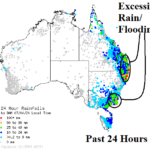
East Coast of Australia Excessive Rains
04/07/2024, 11:20 am EDT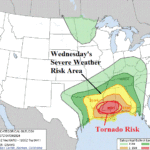
Major U.S. Storm With Peak Severe Weather/Excessive Rainfall Tomorrow in Northern Gulf States
04/09/2024, 6:00 am EDT
Fig. 1: The NOAA/CPC cold season 2023-24 gas population weight HDD verification versus 10-year/30-year normal.
Discussion: Typical of the modern-day climate…the cold season starts with promise, seasonably cold in November (Fig. 1). However, due to lack of snow cover, the front end of meteorological winter (December) is very warm. Mid-winter features one cold outbreak, enough to make an otherwise warmer than normal January appear seasonably cold. The brief cold in January inspires a snow cover advance. However, once the end of meteorological winter arrives, milder winds erase U.S. snow cover causing another warm month. The changing seasons bring an energetic upper air flow that can cause some late season cold weather and March averages seasonably chilly. The 2023-24 (El Nino) cold season had similarities with the 2021-22 (La Nina) winter season HDD distribution (Fig. 2).
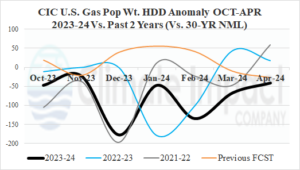
Fig. 2: Observed U.S. gas population weight HDD for October through April for the past 3 years.
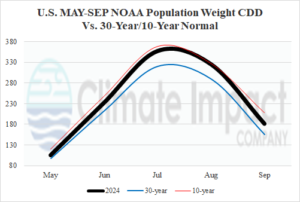
Fig. 3: The Climate Impact Company population weight CDD forecast compared to the 30-year and 10-year normal for the 2024 warm season.
The 2024 warm season (MAY-SEP) U.S. population weight CDD forecast is in-between the 30-year and 10-year normal for May and June, near the 10-year normal in July and August, and equidistant between the 30-year and 10-year normal in September (Fig. 3). The outlook combines the Climate Impact Company forecast and recently updated monthly ECMWF outlook. Based on trends from the past 10 years, the forecast is likely revised hotter with subsequent updates. Key to the anticipated warmer adjustments is where drought sets-up for the 2024 summer season and whether that drought region is across or near a high population region. The 2024 outlook is certainly warmer than normal but lagging the 2021-2023 summertime signatures (Fig. 4). The preliminary 2024 forecast compared to the 10-year normal clearly identifies a cooler than recent year projection (Fig. 5).

Fig. 4: The Climate Impact Company population weight monthly CDD departure from 30-year normal CDD for April to October 2024 vs. the last 3 years.
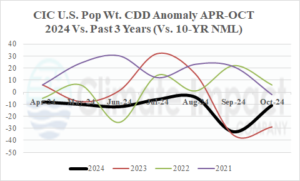
Fig. 5: The Climate Impact Company population weight monthly CDD departure from 10-year normal CDD for April to October 2024 vs. the last 3 years.
![Climate-Impact-Company-logo-sm[1]](https://climateimpactcompany.com/wp-content/uploads/2023/08/Climate-Impact-Company-logo-sm1.png)
